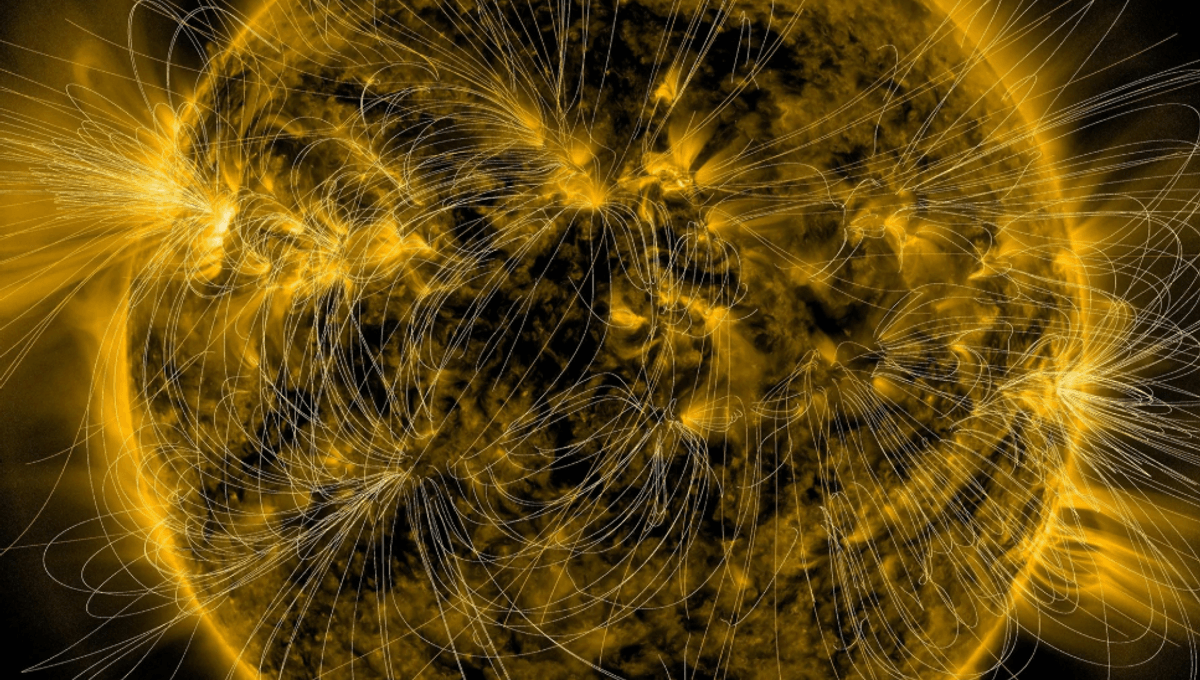
Earth is no stranger to geomagnetic storms, but none have rivaled the one sparked by the most powerful solar storm on record: the Carrington Event of 1859.
It turns out that the disruption to Earth’s magnetic field during the Carrington Event was even more severe than once thought. A 2024 study used a combination of modern digital tracing and meticulous reconstruction to mine historical records of the Earth’s magnetic field, uncovering insights once believed out of reach. The finding reinforced how vulnerable modern society could be to a repetition of an event like this.
On September 1, 1859, the Sun spewed electrified gas and subatomic particles amounting to the energy of 10 billion atomic bombs towards the planet, causing telegraph communications to fail, literally shocking operators, and causing systems to catch fire. Northern Lights were reported as far south as Cuba and Hawaii, allowing witnesses to read newspapers by the light of the auroras alone.
Solar storms have occurred throughout Earth’s existence. However, our estimates of scale relied on very indirect measures like the presence of certain radio-isotopes in tree rings. In recorded history reports of enormous auroras can hint at the timing of solar storms, but are of little use in estimating size. Consequently, our data on just how big solar storms can get stretches back less than two centuries.
As chance would have it, the Carrington Event – easily the largest storm in that time – occurred when such tracking was in its infancy. Records made at the time have been found to hold more information about the Event than had been thought, and it’s not good news for those preparing for future impacts in a more wired world.
Had the Carrington Event occurred even a few decades later than its actual date of 1859, it would have had electricity and long railway lines to electrify, not just telegraphs. At least, however, we’d have known its size better.
Nevertheless, both the UK’s Greenwich and Kew observatories had magnetograms that measured fluctuations in the strength and direction of the Earth’s magnetic field, subsequently shown to be mainly in response to solar activity.
Since 1838, local geomagnetism was measured at Greenwich by shining light onto mirrors on the ends of magnetized pieces of metal suspended so they could swing freely, with the reflected light falling on photosensitive paper. Kew joined in two years before the great storm.
As solar activity disturbed the Earth’s magnetic field, the magnets twisted, causing the light to move across the paper. The stronger the disruption, the further the light shifted. The paper was mounted on a slowly rotating drum, similar to those disaster films have taught us to associate with seismometers.
Unfortunately, neither system had been built in anticipation of the geomagnetic field taking a beating anything like as strong as 1859 had in store. As a result, the mirror-bearing metal swung so widely, the light beam went off the photographic paper for 12 hours during a magnetic storm preceding the Carrington Event, and again during the event itself. Such large movements tell us these were two immensely strong incidents, but not how strong.
It’s here that digitizing the magnetogram records has proven an unexpected boon. The paper records have been carefully archived, and according to a team led by Dr Ciaran Beggan of the British Geological Survey they “Are in relatively good condition considering their age and the manner of preservation.” After careful extraction from their bindings, the daily records were photographed and digitized, creating a continuous sequence, rather than disconnected days.
By measuring the rate of movement of the light beams before they left the paper and after they returned, researchers calculated the rate at which the field was changing, which they estimated at 500 nT/minute as a minimum. Given that once-a-century storms are expected to produce changes of 350-400 nT/min at London’s latitude, even the floor value is extraordinary.
Besides the problem of how far the light swung off the paper, it is not easy to translate the measured movements to modern SI units. Nevertheless, Beggan and co-authors conducted detailed reconstructions using comparisons between the two measurements to translate the movements into nanotesla changes in field strength. Changes in the field’s orientation are equally important.
Two years after the Carrington Event, a scientific paper estimated its strength based on data like this and came to similar conclusions. However, 20th-century astronomers, having not experienced anything close to as large, concluded the original estimates must have overstated it.
“Looking at the rate of change […] it’s at least 500 nanotesla per minute, which kind of supports what the original 1861 papers suggested,” Beggan told New Scientist. “It just proves once again that the Carrington storm was an extreme event.”
Competing scientific societies established these magnetograms because, before GPS, the Earth’s magnetic field was crucial for navigation. As far back as the 17th century, Edmond Halley led voyages to map the way the field changed across the Atlantic Ocean, before realizing changes with time needed to be accounted for as well. It’s unfortunate the two sets of records we have were just 20 kilometers (12.4 miles) apart, hardly representing global coverage, but more piecemeal data was collected from Finland, India, and Guatemala among other places.
An earlier version of this article was published in March 2024.
Source Link: The Carrington Event, History’s Greatest Solar Storm In 1859, Was Even More Powerful Than Once Thought